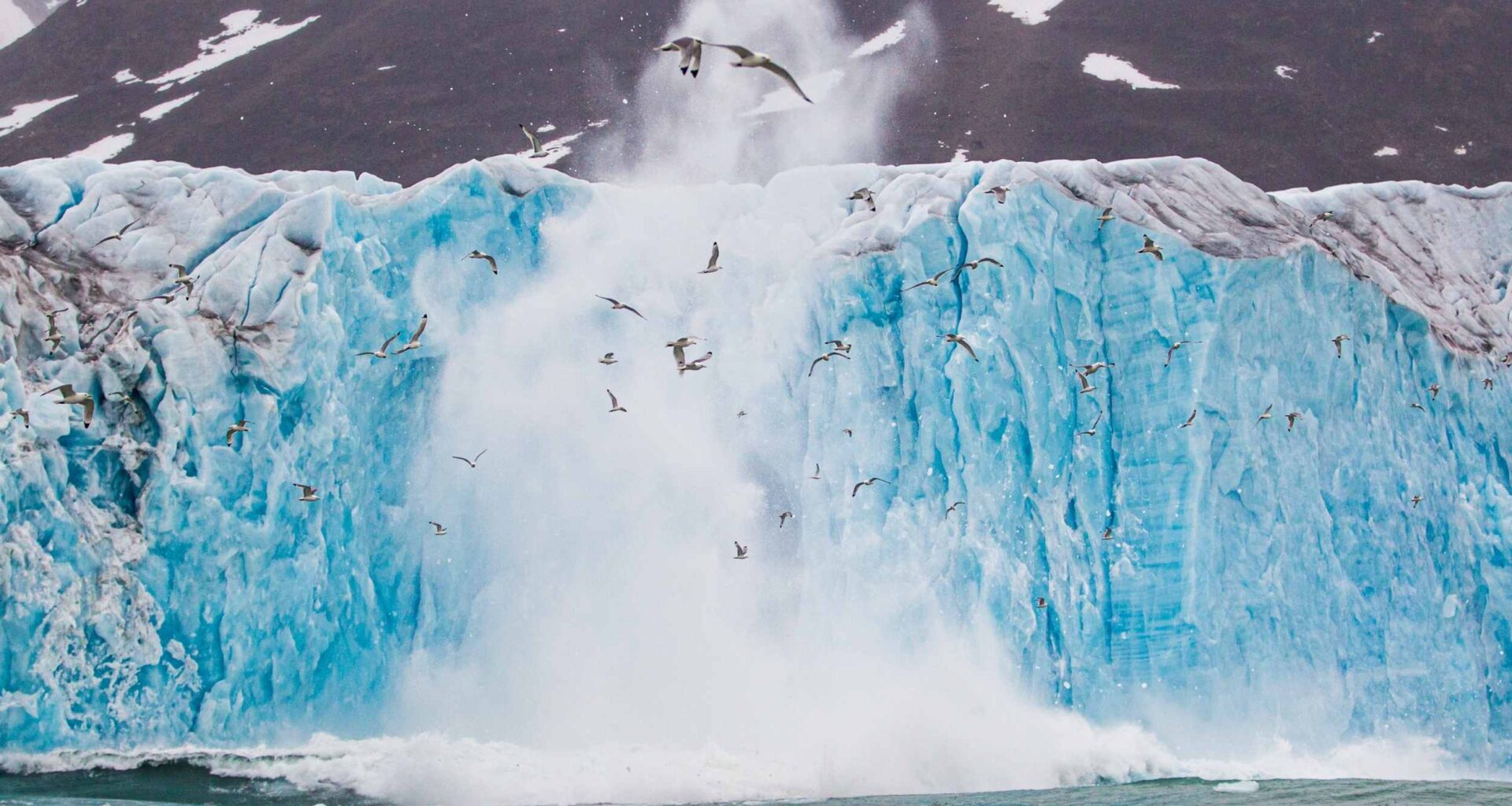In a new study, a 6-mile-long fiber optic cable laid on the seafloor beside a South Greenland glacier logged 56,000 iceberg breakups in near real time. The array captured the full chain of events from the first crack to waves that churn the fjord.
A University of Washington led team placed the cable in the fjord at Eqalorutsit Kangilliit Sermiat in southern Greenland. The record offers a close up view of how a tidewater glacier loses mass beneath the surface.
Glaciers, icebergs, and cables

Using distributed acoustic sensing, a laser based method that turns a fiber into thousands of vibration sensors, the team read tiny strains along the cable.
“It can just sense everything,” said David Sutherland, a physical oceanographer at the University of Oregon who did not contribute to the work.
The system also used distributed temperature sensing, a light-based technique that reads temperature continuously along the fiber.
Together, the two methods time stamped every step of calving, from the first micro crack to the iceberg’s last pop.
The work was led by Dominik Gräff, a glaciologist, at the University of Washington. His research focuses on ice front dynamics and fiber optic sensing.
Getting close to the ice front
A tidewater glacier, a glacier that ends in the ocean and actively calves icebergs, is a difficult place to work safely. Ice cliffs tower overhead and much of the critical action happens below water.
The fjord is often jammed with ice mélange, a closely packed mix of sea ice and icebergs that shifts without warning. Instruments can be crushed or lost if the ice closes in.
“We don’t have much idea what’s actually going on below the water,” said Gräff. A seafloor cable allowed the team to listen from a safer distance.
The cable lay across the fjord, close to the glacier’s face, and recorded continuously. That placement made it sensitive to both surface motion and deeper signals inside the water.
What the cable picked up
The first signatures of icebergs breaking off glaciers were sharp bursts from early cracking in the ice. Those acoustic pulses raced through the fjord before any visible movement at the cliff.
As fractures coalesced, the cable recorded Scholte waves, slow waves that travel along the seafloor sediments and reveal where the detachment began. These signals helped locate small events that satellites miss.
Large blocks triggered surface waves that behaved like small tsunamis in the narrow fjord. The same events also launched internal gravity waves, waves that move along density layers inside the water, long after the surface had stilled.
The cable tracked each iceberg after release as it drifted away from the terminus. It even heard the final breakup as bergs fractured into smaller pieces downstream.
Currents break icebergs off glaciers
Passing icebergs pulled long underwater wakes that temporarily cooled the seafloor. Those wakes also sped up near bottom flows and shook suspended sections of the cable through vortex shedding, repeated eddies forming behind an object.
The fiber saw mixing where cold fresh layers met warmer salty water. That mixing matters because it moves heat toward the ice face and can thin the protective boundary layer.
Field evidence supports the idea that calving can amplify melt under water by stirring the fjord. Past observations in Antarctica show internal tsunamis from calving drive strong mixing that increases heat transfer.
In Greenland, the new record links falling ice to waves, currents, and enhanced melt at the ice front. The result helps explain why underwater melt can outrun what simple models predict.
Data changes risk and forecasts
A continuous seafloor record captured the entire process chain in a single fjord. That process level view can sharpen models that estimate how much ice is lost each season.
“There are very few seismological datasets where, within such a short amount of time, you record so many different phenomena,” said Andreas Fichtner, a seismologist at ETH Zürich who was not part of the work but collaborates with one of the study’s authors.
“It’s pretty remarkable,” said Andreas Fichtner, a seismologist at ETH Zürich who was not part of the work but collaborates with one of the study’s authors.
The surface waves that shoot through the fjord after a big detachment also carry a public safety angle. Recent work shows submarine fiber arrays can detect infragravity and tsunami signals offshore.
A modeling study demonstrates how iceberg calving can launch fjord tsunamis that travel rapidly down narrow channels. With cables already crossing many coasts, future warning systems could be strengthened without new seafloor hardware.
Lessons from glaciers and icebergs
The cable based approach can be repeated at other outlets where conditions differ. Some glacier fronts float, while others, like this one, sit on bedrock.
That variation matters for how waves form and how heat reaches the ice. A richer set of sites will tell scientists how general these pathways are.
The new method can also reveal how internal gravity waves, waves that move along density layers inside the water, change with season. When subglacial discharge slows, calving driven waves may dominate the melt budget.
Better physics in models will help communities plan for sea level rise and local hazards in fjords. Listening through glass on the seafloor turns a dangerous place into a data rich one.
The study is published in Nature.
—–
Like what you read? Subscribe to our newsletter for engaging articles, exclusive content, and the latest updates.
Check us out on EarthSnap, a free app brought to you by Eric Ralls and Earth.com.
—–

